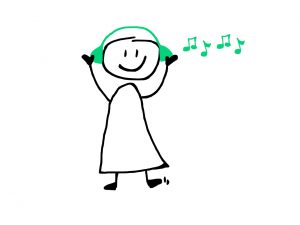So far, you have learned how to use the present progressive tense, aka the ている form. But in this lesson, we are going to step it up a notch by learning how to say while in Japanese. This grammar conjugation is referred to as ながら.
Conjugating Verbs To Use ながら
Luckily for you guys, this verb form is quite easy. The general rule of thumb is Verb-ます stem + ながら. However, there are still a few instances where this conjugation can be a little bit deceiving. Let’s go over it some more by separating its forms in verb groups.
る verbs
As mentioned before, all you need to do to use ながら is to use the verb stem. In other words, cut off the る and add ながら。
Here are some examples of this verb form in action.
| る Verbs | Stem Form | ながら |
| 食べる | 食べ | たべながら |
| 見る | 見 | 見ながら |
| 伝える | 伝え | 伝えながら |
| 開ける | 開けながら | 開けながら |
IMPORTANT NOTE: Keep in mind that ながら always goes with a verb and shouldn’t stand by itself at any given moment in time.
うVerbs
う Verbs are in the same category, but since the stem of う verbs isn’t syllabic like those of る verbs, usually another character is needed to fill in the gap before making a conjugation.
Here are some examples of this verb form in action in うverbs
| う Verbs | Stem Form | ながら |
| 書く | かk | 書きながら |
| 歩く | あるk | 歩きながら |
| 買う | 買 | 買いながら |
| 踊る | 踊r | 踊りながら |
As you can see I left some characters in romaji because that is where the stem ends. I just did this to show you that you must be careful using conjugating うverbs with ながら. However, if it is one thing you can always count on when dealing with うverbs, it’s the use of いなが. Just remember to drop the うbefore you do anything though.
Irregular Verbs
Using ながらwith irregular verbs is a common way of expressing “while doing something” in Japanese. The conjugations are simple, so you shouldn’t have too much of a problem when dealing with them.
The most important irregular verbs you ought to pay attention to are:
する(to do)
And
来る (to come)
With their conjugations being:
する―→ しながら
来るー→ 来ながら
When to use ながら
Think of ながら as a more advanced form of ている. Yes, its used to describe the present progressive tense, but it also used to describe actions done at the SAME time. This is the main distinction between the two. Here are some examples to further explain its usage:
私(わたし)は歩(ある)きながら食(た)べ物(もの)を落(お)ちてしまった。
While I was walking, I dropped my food.
パソコン(ぱそこん)を使(つか)えながら、もう電話(でんわ)を掛(か)けました。
While using the computer, I was also on the phone.
歌(うた)いながら声(こえ)をなくしてしまった。
While singing, I lost my voice.
勉強(べんきょう)しながら音楽(おんがく)を聴(き)いていた。
While studying, I was listening to music.
Okay, so you see just how useful this little particle/ grammar point can be right? Once again, use it to describe simultaneous actions in either the past, present or future. Let’s put what you’ve just learned to the test in a short homework assignment. 頑張って 皆さん。
Homework
Conjugate the following verbs using ながら
- 食(た)べる
- 飲(の)む
- 歩(ある)く
- 泳(およ)ぐ
- 読(よ)む
- 歌(うた)う
- 死(し)ぬ
- する
- くる
- 見(み)る
- 掃除(そうじ)する
- 聴く
Answer Key
- 食(た)べながら
- 飲(の)みながら
- 歩(ある)きながら
- 泳(およ)ぎながら
- 読(よ)みながら
- 歌(うた)いながら
- 死(し)にながら
- しながら
- きながら
- 見(み)ながら
- 掃除(そうじ)しながら
- 聴きながら
